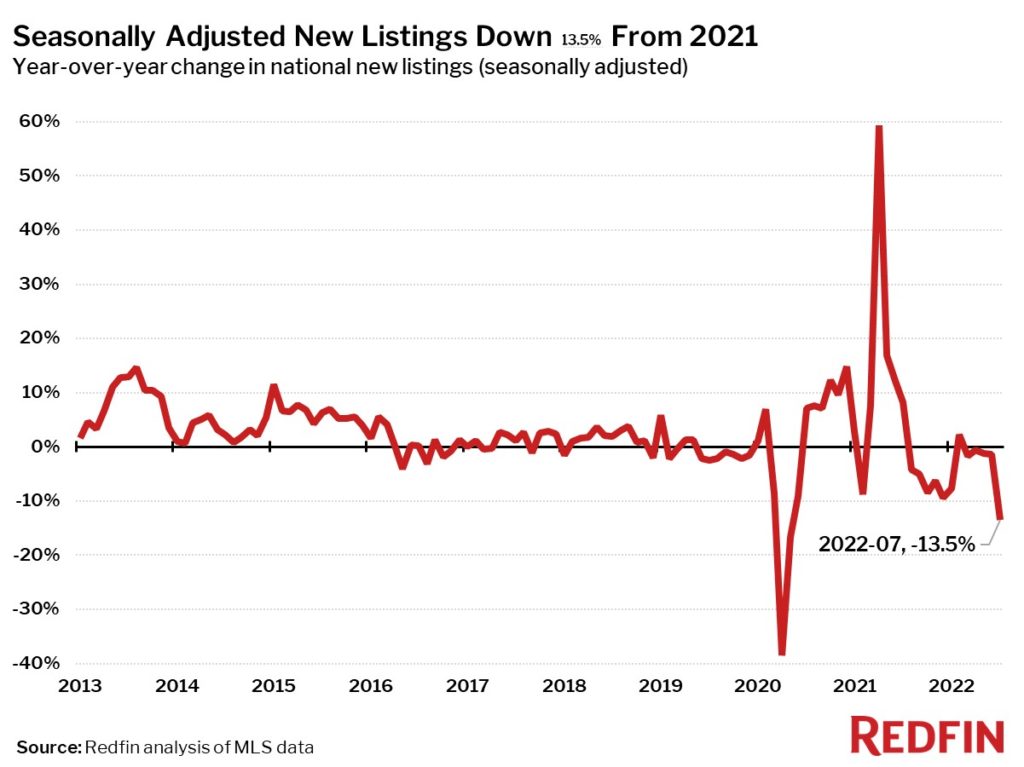Home sales dropped 19.3% year over year in July to their lowest level since the beginning of the pandemic, when the housing market was at a near standstill. That’s also the biggest annual decline in U.S. home sales in more than a year, a reflection of the continued cooling effects of 5.4%-plus mortgage rates and nationwide economic uncertainty. Home sales dipped 4.1% from the previous month, the sixth-straight monthly decline. Some prospective homebuyers were sidelined because they were priced out of the market; others were wary of potential home-value declines in the near future.
Home prices increased at their slowest pace since June 2020, rising 7.7%. Price growth dipping into the single digits after two years of double-digit increases reflects months of slumping homebuyer demand, homes sitting on the market longer than before and dwindling competition.
Sellers also backed off, with many hesitant to sell for less than what they would have gotten at the height of the pandemic homebuying frenzy. Plus, many homeowners are staying put because they have a low mortgage rate compared to today’s rates. New listings dropped 13.5% year over year, the biggest decline in over a year. Many of the sellers who did list their homes had to settle for less. Twenty-one percent of sellers dropped their asking price in July, the highest share since at least 2012, when Redfin started tracking this data.
“The buyers who are still in the game are finally getting a break from bidding wars, which means they can be picky,” said Raleigh, NC Redfin agent Pam Lewis. “Three months ago, buyers were saying, ‘get me a building with four walls and I’ll make it work.’ Now they have some choices. They don’t want a home if it doesn’t have the fenced-in yard or guest room on their wish list, and they want a $20,000 price reduction if a home has been on the market for more than a week. I’m telling buyers they’re not likely to see their property values decrease over time, but they may not appreciate as fast as homeowners have become accustomed to in the past few years.”
† – “pp” = percentage-point change
Scroll down for national charts and market-by-market breakdowns. For downloadable data on all of the markets Redfin tracks, visit the Redfin Data Center. Refer to our metrics definition page for explanations of all the metrics used in this report.
![]()
![]()
![]()

![]()
![]()
![]()
![]()

